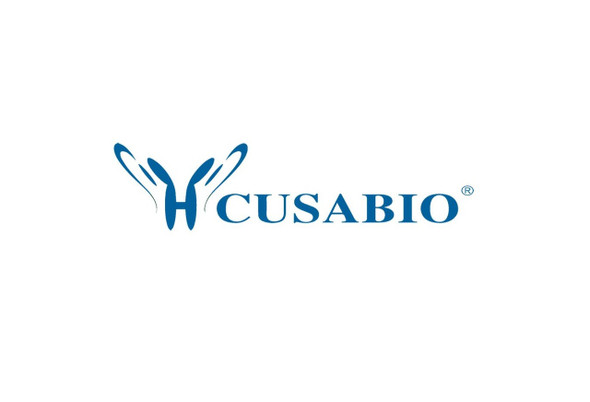Cusabio Other Organism Recombinants
Recombinant Human immunodeficiency virus type 1 group M subtype K Protein Vpr (vpr) | CSB-EP314796HLP
- SKU:
- CSB-EP314796HLP
- Availability:
- 3 - 7 Working Days
Description
Recombinant Human immunodeficiency virus type 1 group M subtype K Protein Vpr (vpr) | CSB-EP314796HLP | Cusabio
Alternative Name(s): R ORF protein (Viral protein R)
Gene Names: vpr
Research Areas: Immunology
Organism: Human immunodeficiency virus type 1 group M subtype K (isolate 96CM-MP535) (HIV-1)
AA Sequence: MEQAPEDQGPQREPNNEWTLEILEELKREAVRHFPRPWLHNLGQHIYTTYGDTWEGLEAIIRILQQLLFIHFRIGCHHSRIGIIPQRRGRNGSSRS
Source: E.coli
Tag Info: N-terminal 10xHis-tagged and C-terminal Myc-tagged
Expression Region: 1-96aa
Sequence Info: Full Length
MW: 18.8 kDa
Purity: Greater than 85% as determined by SDS-PAGE.
Relevance: During virus replication, may deplete host UNG protein, and incude G2-M cell cycle arrest. Acts by targeting specific host proteins for degradation by the 26S proteasome, through association with the cellular CUL4A-DDB1 E3 ligase complex by direct interaction with host VPRPB/DCAF-1. Cell cycle arrest reportedly occurs within hours of infection and is not blocked by antiviral agents, suggesting that it is initiated by the VPR carried into the virion. Additionally, VPR induces apoptosis in a cell cycle dependent manner suggesting that these two effects are mechanistically linked. Detected in the serum and cerebrospinal fluid of AIDS patient, VPR may also induce cell death to bystander cells.During virus entry, plays a role in the transport of the viral pre-integration complex to the host nucleus. This function is crucial for viral infection of non-dividing macrophages. May act directly at the nuclear pore complex, by binding nucleoporins phenylalanine-glycine-repeat regions.
Reference: "Near-full-length genome sequencing of divergent African HIV type 1 subtype F viruses leads to the identification of a new HIV type 1 subtype designated K." Triques K., Bourgeois A., Vidale N., Mpoudi-Ngole E., Mulanga-Kabeya C., Nzilambi N., Torimiro N., Saman E., Delaporte E., Peeters M. AIDS Res. Hum. Retroviruses 16:139-151(2000)
Storage: The shelf life is related to many factors, storage state, buffer ingredients, storage temperature and the stability of the protein itself. Generally, the shelf life of liquid form is 6 months at -20?/-80?. The shelf life of lyophilized form is 12 months at -20?/-80?.
Notes: Repeated freezing and thawing is not recommended. Store working aliquots at 4? for up to one week.
Function: During virus replication, may deplete host UNG protein, and incude G2-M cell cycle arrest. Acts by targeting specific host proteins for degradation by the 26S proteasome, through association with the cellular CUL4A-DDB1 E3 ligase complex by direct interaction with host VPRPB/DCAF-1. Cell cycle arrest reportedly occurs within hours of infection and is not blocked by antiviral agents, suggesting that it is initiated by the VPR carried into the virion. Additionally, VPR induces apoptosis in a cell cycle dependent manner suggesting that these two effects are mechanistically linked. Detected in the serum and cerebrospinal fluid of AIDS patient, VPR may also induce cell death to bystander cells.
Involvement in disease:
Subcellular Location: Virion, Host nucleus, Host extracellular space
Protein Families: HIV-1 VPR protein family
Tissue Specificity:
Paythway:
Form: Liquid or Lyophilized powder
Buffer: If the delivery form is liquid, the default storage buffer is Tris/PBS-based buffer, 5%-50% glycerol. If the delivery form is lyophilized powder, the buffer before lyophilization is Tris/PBS-based buffer, 6% Trehalose, pH 8.0.
Reconstitution: We recommend that this vial be briefly centrifuged prior to opening to bring the contents to the bottom. Please reconstitute protein in deionized sterile water to a concentration of 0.1-1.0 mg/mL.We recommend to add 5-50% of glycerol (final concentration) and aliquot for long-term storage at -20?/-80?. Our default final concentration of glycerol is 50%. Customers could use it as reference.
Uniprot ID: P0C1P2
HGNC Database Link: N/A
UniGene Database Link: N/A
KEGG Database Link: N/A
STRING Database Link: N/A
OMIM Database Link: N/A






